July itinerary in Japan Day 2 (Hokkaido)
(Sunday, July 3)
Table of Contents
4. Akkeshi Taste Terminal, Conchiglie
6. Lupin the Third Wrapping Train
7. Flower Clock and Kushiro Sunset
1. Kokutaiji Temple
I headed from Kushiro City to Akkeshi-cho to fully enjoy sightseeing in Akkeshi on July 3 (Sun.). I used the following transportation to Akkeishi-cho.
Depart Kushiro Station at 8:18, Nemuro Line “bound for Nemuro Station”, arrive at Akkeshi Station at 9:11, Fare Yen 1,130
After arriving at Akkeshi Station, I immediately changed to a bus and headed for Kokutaiji Temple. The transportation I used was as follows.
Depart Akkeshi station at 9:15, Kokutaiji line, arrive at Kokutaiji Temple at 9:22, Fare Yen 170
Kokutaiji Temple was built by the Edo Shogunate in 1804 and is one of the three official temples in Ezo. The other two are Usu Zenkoji Temple (Date City) and Samani Tojuin Temple (Samani Town). The three official temples in Ezo were intended to provide funeral rites for Japanese who died in Ezo (present-day Hokkaido) and to propagate Buddhism to the Ainu people. They were also meant as a check against the Russian Empire, which was trying to expand into Ezo and proselytize Christianity to the Ainu people.
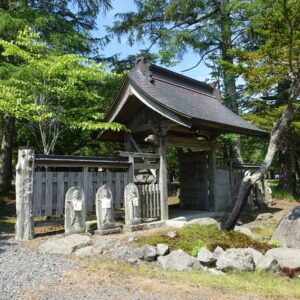
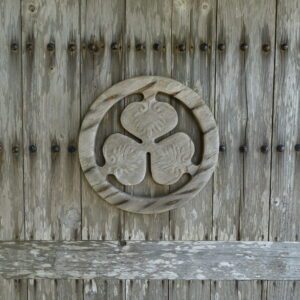
Kokutaiji Temple is designated as a national historic site. The garden in front of the main hall was magnificent. I strolled around slowly and found Kokutaiji to be a nice and atmospheric temple. On the gate of the temple, there was a carving of the wild ginger trefoil family crest of the Tokugawa clan, which indicates that the temple was established by the Edo Shogunate.
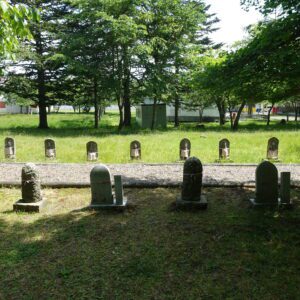
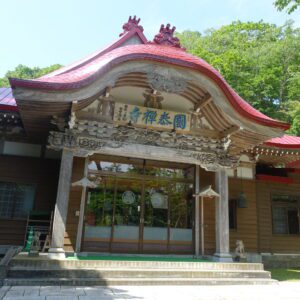
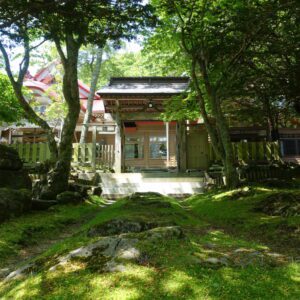
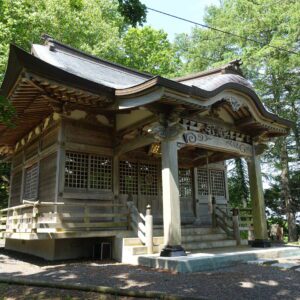
2. Akkeshi Shrine
Right next to Kokutaiji Temple is the Akkeshi Shrine. Just on Sunday, July 3, when I visited, the annual festival was being held.
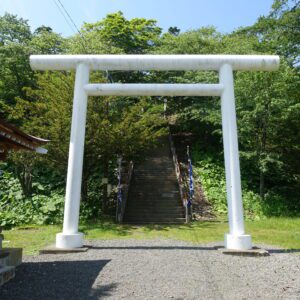
Akkeshi Shrine was founded by Tokunai Mogami in 1791. Tokunai Mogami traveled to Ezo nine times and was known as the greatest “Ezo connoisseur” of the Edo period (1603-1868). Tokunai Mogami was also a friend of Philipp Franz von Siebold, a German physician, and botanist.
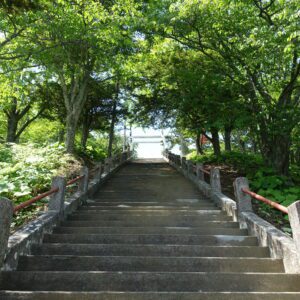
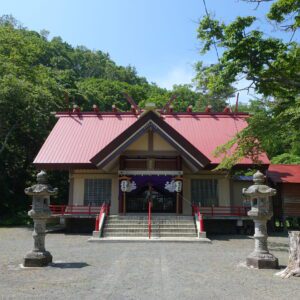
3. Shogyoji Temple
I walked from Kokutaiji Temple and Akkeshi Shrine to Shogyoji Temple. It took just over 10 minutes on foot.
Shogyoji Temple dates back to 1879 when the Otani sect of Jodo Shinshu established the Akkeshi Sermon Hall. The present main hall was dismantled from the main hall of Manchoji Temple (built in 1799) of the Jodo Shinshu sect in Itoigawa City and moved to the present location. The main hall is the only one of its kind in East Hokkaido and is a national important cultural property.
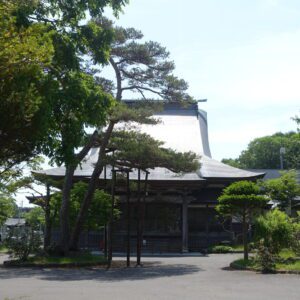
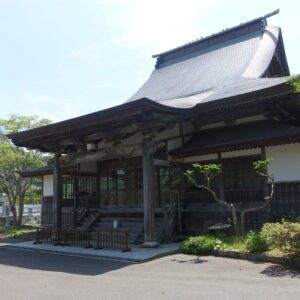
The bell tower of Shogyoji Temple was built in 1908. It is a national tangible cultural property.
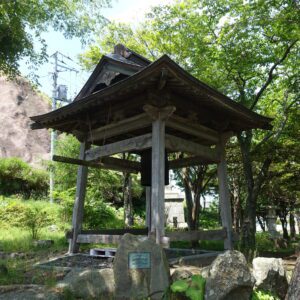
4. Akkeshi Taste Terminal, Conchiglie
After visiting Shogyoji Temple, I took a cab to Conchiglie, the Akkeshi Taste Terminal. The cab ride from Shogyoji Temple to Conchiglie cost about Yen 1,200 and took about 10 minutes.
Conchiglie is the nickname of Michi no Eki (roadside station) Akkeshi Gourmet Park, which means “shell-shaped food” in Italian. The exterior of the facility is also designed in the image of oysters, a specialty of Akkeshi.
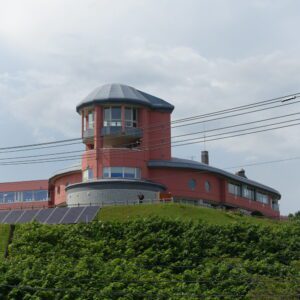

Conchiglie is a very popular roadside station, having received 89.9 points in the “Restaurants and Other Meals” category of the Roadside Station Ranking 2022 in the April issue of the travel magazine “Hokkaido Jalan” and has been ranked first for 12 consecutive years. It is built on top of a small hill, so the view from the conchiglie is very good.
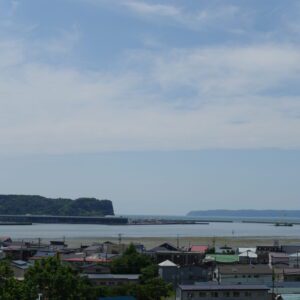
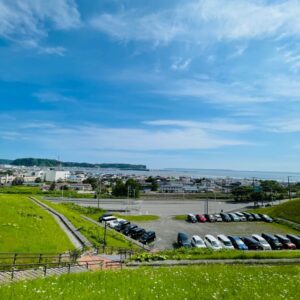
Although Conchiglie is a roadside station, I recommend a visit because it is only a 4-minute walk from Akkeshi Station, making it easily accessible to travelers traveling by train.
5. Akkeshi-Ohashi Bridge
After having lunch at Conchiglie, I took a walk to the Akkeshi Ohashi Bridge. The Akkeshi Ohashi Bridge is 456.5 meters long. It was opened in 1972 as the first marine bridge in Hokkaido. The bridge spans the waterway bordering Lake Akkeshi and Akkeshi Bay. To go to Kokutaiji Temple or Shogyoji Temple from Akkeshi Station, you will pass through the Akkeshi Ohashi Bridge.
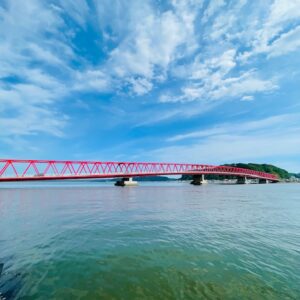
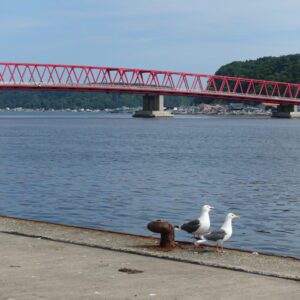
On Lake Akkeshi, where the Akkeshi Ohashi Bridge spans, there is an oyster island (officially Benten-Jima island) and a small Benten shrine.
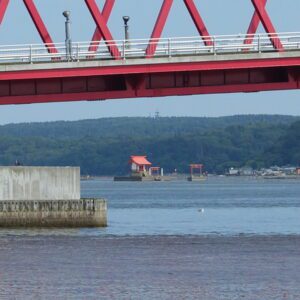
6. Lupin the Third Wrapping Train
After enjoying a walk to the Akkeshi Ohashi Bridge, I returned to Kushiro Station from Akkeshi Station. The train I used is as follows.
Depart Akkeshi Station at 15:04, Nemuro Main Line “bound for Kushiro”, arrive at Kushiro Station at 15:53, Fare Yen 1,130
The train from Akkeshi Station to Kushiro Station was a Lupin the Third wrapping train. The author of “Lupin the Third”, Monkey Punch, is from Hamanaka-cho, Akkeshi-gun, which is located along the Nemuro Line (Hanasaki Line).


The Lupin the Third Wrapping Train makes one and a half round trips a day mainly between Kushiro and Nemuro. However, there are days when the train service is changed to the Kushiro-Abashiri route, or there is no service at all, so it is necessary to check the JR Hokkaido schedule. I had not checked at all, but I was lucky enough to board the Lupin the Third Wrapping Train.

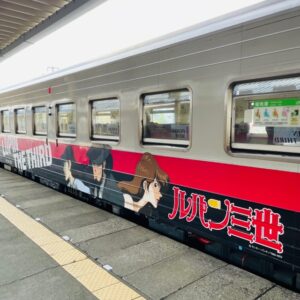
7. Flower Clock and Kushiro Sunset
Returning to Kushiro, I took a short walk in Kushiro City. There is a large flower clock in Shidemai Park near the Nusamai Bridge. The clock is 10 meters in diameter and is decorated with about 1,300 flowers. From Nusamai Park, you can see Nusamai Bridge and Kushiro Fisherman’s Wharf MOO.
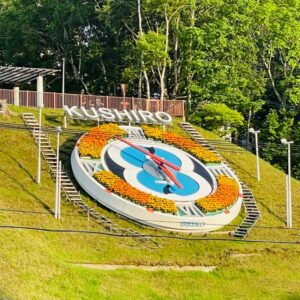
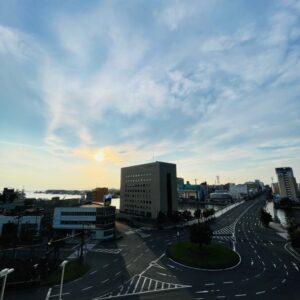
Kushiro is famous for sunsets. It is one of the “World’s Three Great Sunsets”. It is said that the higher the latitude, the deeper the angle of incidence of the sunset, resulting in a more beautiful sunset. The latitude of Kushiro is 43 degrees north. Bali Island in Indonesia and Manila in the Philippines were also selected as one of the “World’s Three Great Sunsets”. I would have liked to take pictures around Nusamai Bridge, but the timing of the sunset was around Kushiro Station. Still, the sunset was beautiful enough.

The current Kushiro Station building opened in 1961 and has a very old landscape. The station building is not the quaint brick building of the early Showa or Taisho periods, and it has a desolate atmosphere. The area around Kushiro Station also has many unused buildings, giving the impression of being quite desolate.
However, Kushiro Station is the terminal station of the limited express “Oozora” train that runs to and from Sapporo Station. In addition, quite attractive ”Ekiben” such as “Taraba Gani (King crab) Chirashi”, “Kaki-ben (Oyster-bento)”, and “Hanasaki Kani-meshi (Blue king crab bento)” are sold there. It was impressive that all the ekiben sold in large quantities in the morning were sold out by the evening. I would like to travel on the limited express “Oozora” someday while eating ekiben.
Note: Transportation departure and arrival times, fares, entrance fees, and meal prices listed in the text are current at the time of BLOG writing. They are subject to change in the future, so please check them yourself when you travel.